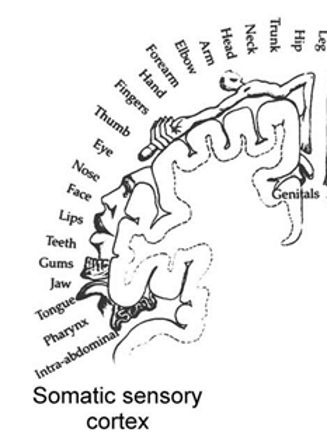Pleasuring the Palate while Powering the Brain
March is National Nutrition Month.


You missed two weeks, but there’s still time to get it right. Nutrition, that is. March is National Nutrition Month, 31 days when USDA makes every effort to remind you what, when, and how to eat in order to get every single last bit of nutrient goodness out every meal and snack. Which matters not just for your body, but for your brain as well.
The relationship between food and your brain begins in the womb when your brain is a simple dot. On the day you are born, the dot/strip/bulges/brain weighs about 12 ounces, comprising several hundred billion cells, enough to enable you to think baby thoughts while powering the nerves that make it possible for you to move and the ones that enable your vision, your hearing, and your senses of taste, smell and touch.
Twenty years or so later, when you have grown to adult size, your fully developed healthy adult human brain, now grown to about 3 pounds, efficiently converts nearly 20 percent of all the calories you consume each day to the energy that maintains management of your entire body. As any neurologist is happy to explain: “The heart exists to pump blood to the brain; the liver exists to pump glycogen to the brain, and the muscles exist to move the brain from place to place.” At the same time, your brain’s special job is to exercise rational intelligence and manage the occasional irrational emotion, all the while preserving the several billion neurons that create, store, sort and retrieve a memory.
Understanding the life-long interaction between what you eat and think and feel is relatively new science. It was not until the 1990s, 20 years after the invention of the PET scan, that neuroscientists were able to watch a real human brain react to real stimuli in real time– and to react not only to the physical act of eating and digesting food, but also to the metaphysical act of thinking about food.
The Sensory Homunculus alters the size of various parts of your body to show the relative distribution of those sensory nerves. As you can see in the diagram, your lips and tongue are much larger than some other supposedly more sensitive organs, rather like those New Yorker maps on which a populous New York City was twice the size of the rest of the country west of the Hudson River.
The first to focus on implications of this interesting disproportion was Sigmund Freud, whose “Three Essays on Sexuality” (1915) describes five stages of child development beginning with the oral stage, a time when all information and pleasure come through the lips and tongue, a time we revisit later as sexual adults or, more simply, when we reach for “comfort food.” It was not until the 1990s, 20 years after the invention of the PET scan, that neuroscientists were able to watch a real human brain react to real stimuli in real time–and to react not only to the physical act of eating and digesting food, but also to the metaphysical act of thinking about food. As a result, thinking about food evolved from sensory experience (“it tastes good”) to a chemical experience (“it powers my immune system”), and finally to a neurological moment (“it powers my brain”). The new name for this is nutritional psychiatry, a term coined in 2013 by The International Society for Nutritional Psychiatry Research to tell us how what we eat affects what we think, what we feel, and who we are.
And why we will enjoy every bite we take in the next few weeks.